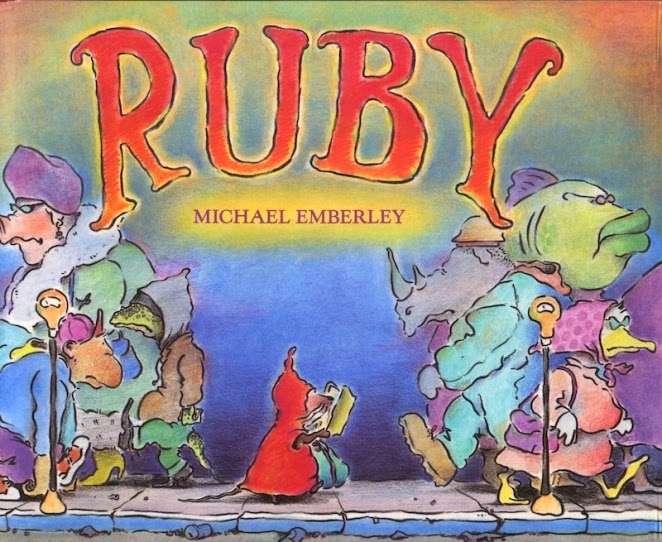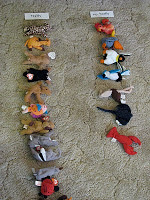 **UPDATE: I'm working hard to make more pieces of this unit available. In the meantime, enjoy my favorite unit and one of love2learn2day's most popular posts!
**UPDATE: I'm working hard to make more pieces of this unit available. In the meantime, enjoy my favorite unit and one of love2learn2day's most popular posts!Over the next 3 months, I will be teaching my FAVORITE UNIT EVER!!! I first wrote and taught this unit back in the days before internet...before Common Core...before man discovered fire...
Just kidding. About the discovery of fire. But close.
Anyway, I'd like to share the unit as it unfolds. I am teaching a group of 4th-6th graders in a 3 hour block, once a week. I originally taught the unit in 6th-8th grade language arts. The unit can be comfortably modified up or down to fit grades 3-8 in a classroom or homeschool setting.
Session 1
Focus: What Every Good Story Must Include/Parts of a Story
Opener
As students enter, I ask them to list every fairy tale title they can name.
Getting to Know You: Fairy Tales
We begin with a quick introduction in which students say their name, followed by their favorite fairy tale. They then repeat all the previous names/favorite tales in the class. This becomes a quick assessment tool as students offer up titles that are not actually fairy tales. In my class, one child named a book and said that the title is a fairy tale because it is fiction. I do not correct students as we will be learning more about what makes a fairy tale in the coming weeks.
Round Robin Fairy Telling
As a class, we retell the story of the Three Little Pigs, popcorn-style. I start the story and keep it going, randomly pointing to a student to have him/her fill in parts. I want them to recognize how much they DO already know. Later in the morning I can use this as an example for certain words/topics..."do you remember the DIALOGUE in the Three Little Pigs," etc.
What Makes a Good Story?
Next, a read aloud: Show Me a Story: Writing Your Own Picture Book. Here, we talk about the tools that authors use to create good stories.
Fairy Tale Bibliography
I hand out a blank bibliography so students can add each book that we read. We will be doing a LOT of fairy tale reading, and I want them to use this as a reference.
 |
| This sheet is now available here! |
I read aloud a traditional Red Riding Hood tale. Then, together, we list fairy tale events and plot them on an excitement scale to show rising action, climax/turning point, and falling action. We talk about how these elements are in every good story...and how the stories that they write will also include these elements. I follow with a reading of Ruby by Michael Emberley. This is a "fractured" version of Red Riding Hood. We track events and plot an excitement scale again, showing that even as the story changes, the general shape of the excitement scale remains the same.

Drama
A big portion of this unit includes drama. Today we did an introductory pantomime activity from Theatre Games for Young Performers.
Comparison/Contrast
First, I read a traditional Cinderella Story. Together, we build a chart to look at various elements of the story. I record on the bulletin board as students record on their own individual charts. Then, I give each student a "fractured" version or a version from another culture to read. They each add this book to their own charts, then present what they discover so that we can add to the class chart (and individual charts.)
It is eye opening to discover just how many versions of Cinderella there are...and how the elements stay consistent throughout the tales. It's those consistent elements that make fairy tales what they are...so we're beginning to uncover how fairy tales differ from other types of fiction.
 |
| Think Sheets are now available here! |
We'll be doing a lot of writing this term. To kick off the year, I read the traditional Three Little Pigs, then ask each student to use a "Fractured Fairy Tale Think Sheet" to brainstorm how they might fracture the story. I suggest that they change one or two elements of the story--perhaps the setting, character, point-of-view of the story, etc... But not all elements. Just a few changes allow students to start experimenting with fairy tale writing. I also mention a few additional guidelines. Their stories will likely include:
- 3 little somethings
- a "big bad" something
- 3 "houses" of some type
- dialogue between little somethings and big bad somethings
- the phrase, "Once Upon a Time"
For additional support, students might also use this site from ReadWriteThink.
Fairy Tale Notebooks
We're compiling all our work into 3-ring binders with page protectors. At the conclusion of the unit, the page protectors will be taken out of the binders and made into permanent reference books.
Once Upon a Time there was a teacher who LOVED teaching fractured fairy tales...
Read more about our adventures here and here. And now you can also read about writing and producing the play portion, here.
**Update**
I am gradually adding items from this fairytale unit to TPT. Currently available:
Fairy Tale, Folktale Characteristics Poster
Short Story: Plot Diagram for Fairy Tales and More!
Character Studies: Folk, Fairy Tale, and Short Stories
Fairy Tale Think Sheets: Story Analysis & Pre-Writing Organizer (New! 4/29/17)
Fairy Tale Maps: Exploring Setting(New! 5/5/17)
Fairy Tale Bibliography Record Sheets(New! 5/12/17)
Fairy Tale Character Wanted Posters(New! 5/17/17)
Folk & Fairy Tale Compare & Contrast Story Chart(New! 5/19/17)
The entire collection is also available in a bundle:
Folk, Fairy Tale, & Short Story Series Bundle (Now complete! Over 100 pages!)







